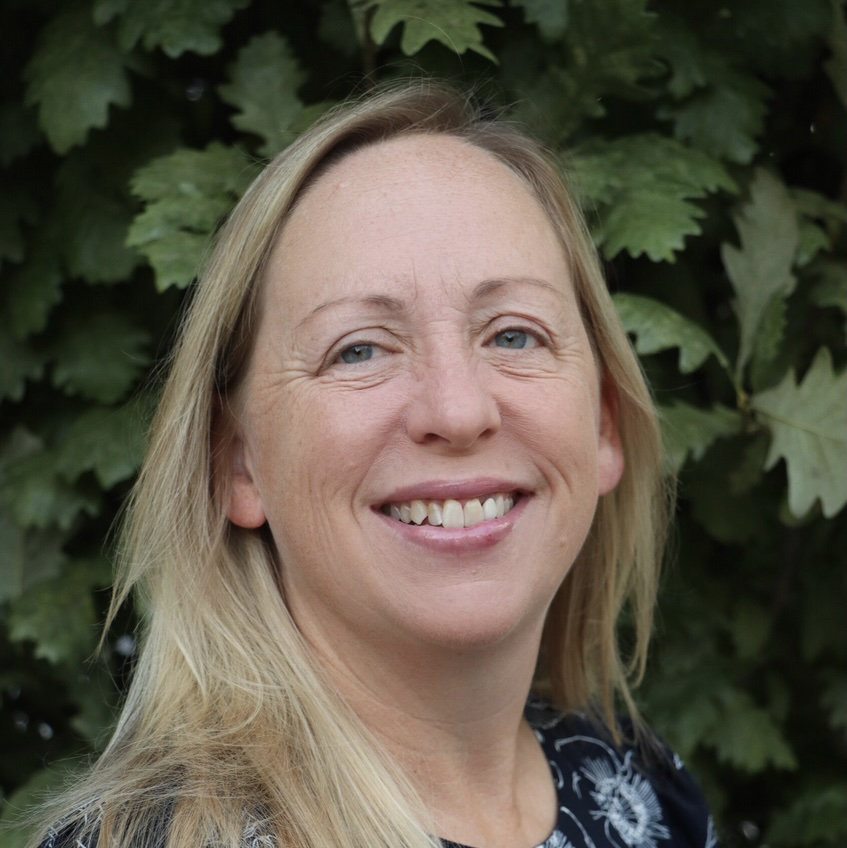In healthcare, it’s a sound philosophy not to want to jump head-first into any emerging technology – particularly in the pediatrics world. But when physicians are “ready” for tools like ambient listening and patients and families expect convenience, it can be difficult to hold the line.
Doing so requires an intentional approach, according to Tanya Townsend, Chief Information & Digital Officer at Stanford Medicine Children’s Health. Given its location in Palo Alto and affiliations with Stanford Medicine and Stanford University, the organization has access to cutting-edge technologies, but “we want to be safe and careful,” she said during a Keynote with Bill Russell, Founder of This Week Health. “We can’t just adopt what works in the adult world. So we’re spending a lot of time looking at new technologies.”

Tanya Townsend
It’s the same philosophy Townsend applied when she stepped into the role at Stanford Children’s last fall, succeeding longtime CIO Ed Kopetsky. Her approach? “Observing and making small adjustments,” she recalled. “I don’t need to come in guns blazing and blow it all up. It was more about how do we maintain this well established operation and just pivot or adjust for the future.”
“Huge opportunities”
Part of that pivot includes creating a digital front door that makes the portal experience “as easy and user friendly as possible,” while also driving access. It’s no easy feat considering the fact that Stanford Children’s is a highly ranked organization, and therefore, a popular destination for pediatric care. “We have a lot of referrals and patients who want or need to see us, but we do have capacity limits,” Townsend noted. “And so, we’re doing a lot around how we manage our schedules to make sure we've got good utilization.” That includes standardizing interactions with providers and leveraging technology to push out appointment reminders and help fill spots from no-shows.
And although her team hasn’t yet seen “huge time savings” by automating messages, they have noticed an improvement in user satisfaction, which is a critical factor. “I believe there are opportunities in that space to help clinicians manage their throughput and workflows, and even better predict sometimes or anticipate some of our patient outcomes so that we can get in front of potentially declining patients,” she said. “Those are huge opportunities in the AI space.”
Building Blocks
Realizing those opportunities, however, requires a commitment to the building blocks that are foundational to any initiative: a solid change management strategy, effective vendor partnerships, and a strong culture.
1. Change management
When any time of change is introduced, it can throw the entire team off balance, according to Townsend. “It’s difficult to be running the shop and learning new things or building new things at the same time, and so, we’re tapping on our end users to manage a lot of change and keep the wheels running. It has to be a key focus to make sure the organization’s culture appreciates the level of change.”
No matter what type of change is being introduced, the go-live is “only the beginning,” she added. “It takes continuous process improvement and continuous partnerships to understand that change and to continuously optimize and ensure that the implementation is bringing the value that we thought it would. It has to be a culture within the organization.”
Whether that means assigning super users to provide at-the-elbow support, or offering continued education, change management needs to be a core focus. “Before the implementation, you need to understand what the lift and effort is going to look like.”
2. Vendor partnerships
One of the biggest challenges in pediatrics is improving patient experience – or perhaps more accurately, gauging the experience. “You’re communicating with the caregiver, not necessarily the patient,” Townsend said. With tools like automated messaging, it’s critical to ensure messages are drafted to reflect that. “Technologies are mostly built on in the adult space. So it is a lot of education and partnerships with our vendors to understand the uniqueness of pediatrics and ensure that the systems are safe and supported for both patients and their families.”
While she does believe technologies have evolved significantly in recent years to focus on the experience for patients as well as clinicians, there’s still a long way to go, and vendors can play a pivotal role. Patients “have an expectation,” Townsend noted. “They want convenience. They want quality. They want to have better access, and they want it at their fingertips.”
3. Culture
When Townsend arrived at Stanford Children’s, her first priority was to establish relationships with her colleagues, which in turn helped to define the journey for digital transformation. What she found immediately was that a solid culture had been established. “They’re very proud of the organization and the mission the results that we’re achieving,” she noted. “Everyone is super supportive and collaborative, and very welcoming – not just within IS, but across the whole organization. I’m really excited to be a part of it because that's not the case everywhere.”
Having that foundation in place paid dividends when it came to devising an ambitious yet realistic strategy. “We don’t want to just check a box and hit the timeline,” she said. Instead, it was about determining the end goal, the desired ROI, and the value proposition. “The idea was, let’s establish that on the front end. And then measure it along the way.”
It’s not an approach that comes naturally to many leaders, including Townsend. “It was a bit of a learning curve to take that approach, because oftentimes my history has been to hit the timeline, and move to the next project.”
Increasingly, leaders are finding that this isn’t the best plan; in fact, it can do more harm than good. “We’re usually trying to push to do more,” she said, which can lead to increased risks. In those situations, it’s imperative that leaders are willing to “call a timeout and educate the organization that, yes, we’re probably going to spend more money by extending the timeline, but the risks are far too great to stay on this path.”
That willingness to take a stand – especially an unpopular stand – is a critical aspect of leadership, and will continue to become more vital as organizations are expected to do more with fewer resources. It’s a skillset that takes time to develop, said Townsend, who strongly advised colleagues to further their education as much as possible and invest time in networking.
“Keeping that network close and having access to experts you can lean on when you have a question or just need support” is critically important, she noted.
Her final piece of advice? “Get out of IT and understand the business,” she noted, adding that while it may seem counterintuitive, it’s imperative in an industry as complex as healthcare. “It’s understanding what healthcare is all about, whether that’s improving the revenue cycle or helping clinicians, and being able to articulate that.”


Questions about the Podcast?
Contact us with any questions, requests, or comments about the show. We love hearing your feedback.

© Copyright 2024 Health Lyrics All rights reserved